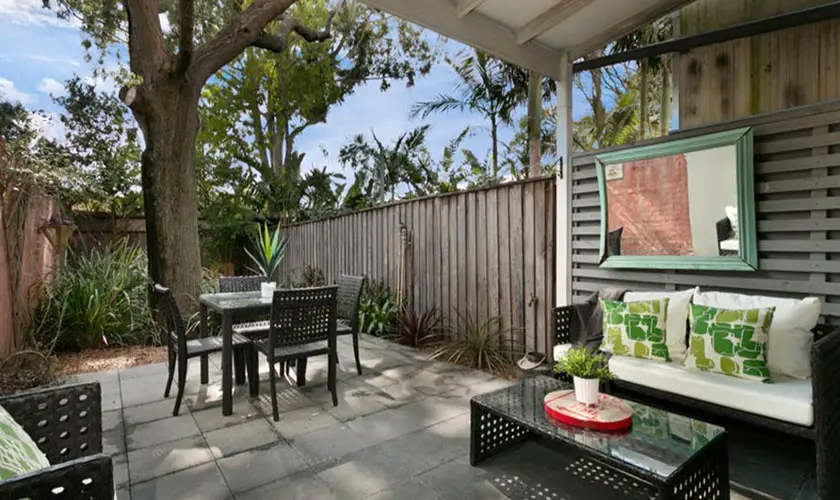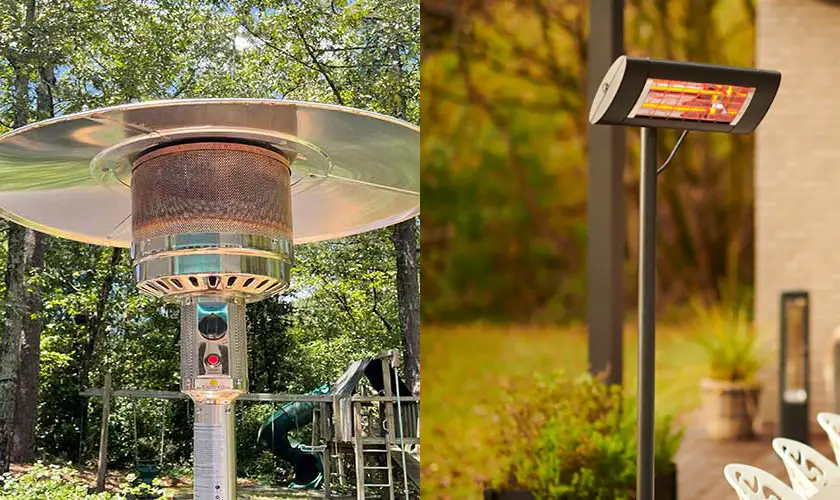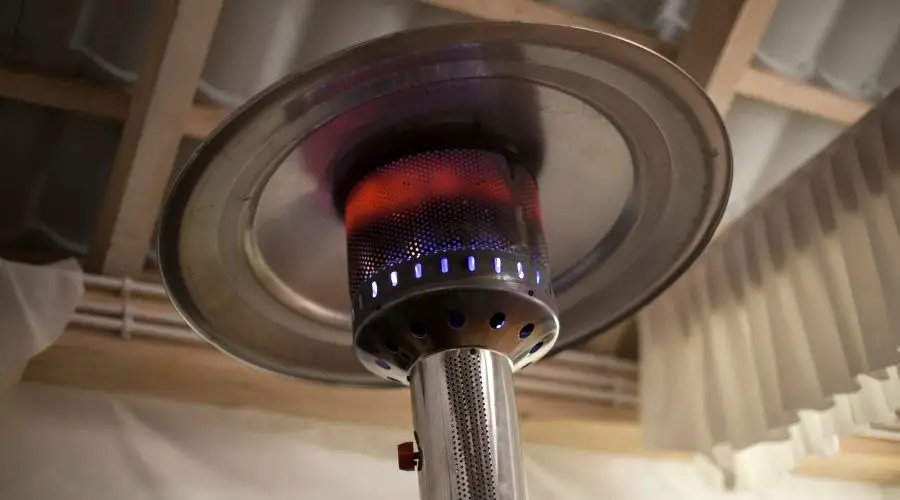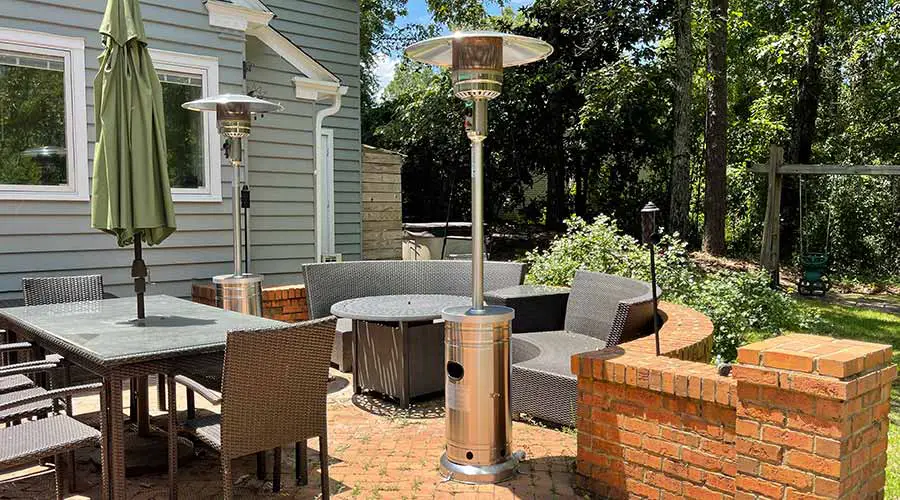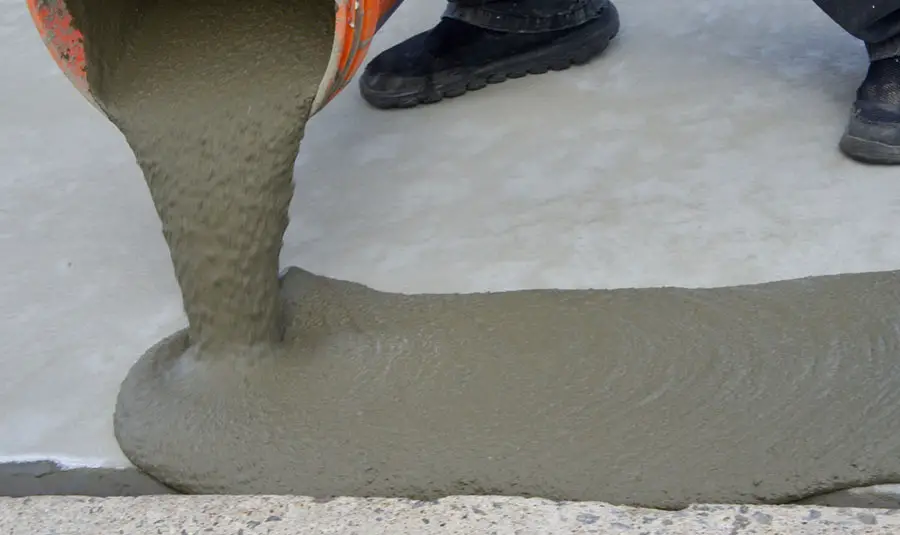
Concrete is quite durable and is an excellent option for constructing backyards, decks, patios, and driveways. Durable as concrete may be, it still has a life span and may become dreary and worn after many years of use. Weather extremities and exposure will no doubt affect concrete over time. And that calls for repairs that require you to pour new concrete over it.
To pour concrete over old concrete, you need a smaller aggregate and a reinforcement mechanism to bond the two pieces of concrete. Before pouring concrete, ensure you have a clean and smooth surface. That means repairing cracks, gaps, and other damage to the existing concrete.
In this article, you will discover whether you can add new concrete on top of old concrete. And you will also learn the ways you can do it.
Can You Pour Concrete On Top of Old Concrete?
You can set new concrete on top of old concrete. However, it is not as straightforward as it may sound.
For the poured concrete to take well and remain crack and pothole-free for the longest time possible, one has to make sure that the surface is well-prepped before pouring on the new concrete.
If not, the flaws in the old concrete will reflect on the new concrete ruining your resurfacing effort.
One thing to keep in mind when pouring concrete on old concrete is that the new surface results should restore the integrity of the old surface.
For that reason, it is critical to ensure the old surface has been well repaired and prepped. That increases the chances that your newly poured concrete will have fewer flaws, if any and is likely to last longer.
How to Pour Concrete Over Old Concrete
If you wanted to, you could pour concrete over your old concrete patio. However, those problems will carry over unless you address your patio’s issues and what is causing them.
If your concrete patio still has a sound foundation and is in good condition, you can repair its concrete surface by pouring new concrete. Doing so will also make it more attractive again. However, if the patio base is not sound, you may need to demolish and replace it entirely.
Where possible, it is worth trying to fix your existing patio rather than replacing it. You will spend less money and still get to enjoy using your outdoor space for a while longer. This article discusses how to pour concrete over an old concrete patio in detail.
1. Find and Address Underlying Concrete Problems
First, you need to determine the condition of your old concrete patio. Is it in good shape? Can you repair it? What kind of problem is it facing structurally? And could the existing slab and patio foundation take on additional weight?
Below are some of the damage issues you may need to address:
Tree damage
Having trees growing near your concrete patio could have adverse effects. Over time, the tree roots may spread and begin to push underneath the patio base and even through it. That could end up destabilizing the soils and foundation underneath and, thus, causing cracks on the surface.
Pouring concrete over the old concrete patio will not solve the problem. You need to deal with the tree damage and get rid of it by addressing the problem source. You can do that by:
- Cutting and uprooting the tree on your own
- Cutting and killing the tree using a chemical herbicide
- Hiring an arborist to get rid of the tree
Dealing with trees that pose a danger to your patio’s concrete surfaces is always tricky if you don’t want to kill them. But you can do it by factoring in the trees’ needs when redesigning the concrete patio. You can also consider cutting the small tree roots infringing on the concrete surface and creating a root barrier consisting of physical material, such as metal and an herbicide.
Frost Heaves
Suppose you live in an area that experiences snowy conditions. In that case, your patio could end up being vulnerable to frost heaves, which happen when ice forms in the soil while drawing water from the unfrozen ground, thus segregating the soil particles. As a result, the soil layer heaves upwards and causes cracks which affect the patio foundation and slab.
You may have to stabilize the patio foundations below the frost line where frost heaves are an issue. Sometimes, that means having to replace the entire concrete patio altogether.
Alternatively, you may need to install a ground heating system underneath the existing concrete patio before pouring new concrete over it. It would help to consult an expert when doing this.
Settling
Settling is a process that occurs over time when the soils underneath move for various reasons and cause the structures above to move downward.
It could be that the entire area has unstable soils. Also, the trees nearby could draw up water from the ground and cause them to lose moisture and become unstable. Flooding issues may also affect the stability of your soils and cause them to become unstable over time. Generally, if there is a drainage issue, you are likely to deal with concrete settling.
Your patio’s base sinking is never a good thing because the surface will not be aligned as it should be. So, you may notice telltale signs such as cracks, unevenness over the patio floors, which may cause tripping hazards, and sticking doors and windows that open to the patio and probably the rest of the house.
How you deal with concrete settling will largely depend on the problem your concrete patio faces. But some of the solutions include the following:
Installing and repairing a gutter system: You may need to install a new gutter system or repair the existing one. And you must ensure that all your downspouts drain water several feet away from the patio’s concrete base to improve drainage.
Slab jacking: Typically entails pumping cement slurry through holes drilled into the slab elevating it and keeping it from settling further. The process will enable you to have an even concrete patio to work on. But it cannot fix a slab that has irreparable damage.
2. Prepare the Old Concrete Surface
Once you determine that your old concrete patio is in good condition and fix underlying problems, you can begin preparing it for a new layer of concrete. However, you need to either cover your patio furniture or remove them from the area. In addition, you should ensure you have all the supplies you need, including protecting clothing such as coveralls, gloves, and masks.
The preparation stage takes place in various ways.
Cleaning the Concrete Surface
You need to clean the concrete surface by removing dirt and debris. Cleaning usually helps the new concrete adhere to the existing surface better.
Use a rigid broom and ensure you cover all the nooks and crannies of the patio’s concrete surfaces, including all the cracks.
Once you sweep the dirt and debris, you should use a pressure washer to clean the concrete patio well. If you don’t own one, you can either rent or borrow one. It would be wise to use a detergent at this point to remove stubborn grease or mildew.
Then take a look at the surface and mark areas that need fixing.
Fixing the Cracks
If your concrete patio has cracks, you need to fix them before you can pour new concrete. Here is how you can do that:
- Chipping: Some cracks may require you to chip away damaged concrete so you can create enough space to fix it or pour in new concrete.
- Patching up: For minor cracks, holes, and crevices, you may need to do a patch-up. That involves the use of a concrete repair mix, such as an epoxy patching-up product. You can force this mix into the cracks using a putty knife or trowel and press it down firmly after applying a bond adhesive. Mortar mixes tend to work best for larger gaps.
Fix the Bumps
Cracks are common in damaged concrete surfaces. But they are not the only issue you will face. You may need to deal with raised concrete areas due to settling, frost heaves, and tree damage issues so that the new concrete will spread better.
You can use a grinder to cut away at the raised areas on your concrete patio. And ensure you wear protective clothing, including an appropriate breathing mask, before doing that job.
Concrete grinding has several advantages. It tends to remove any sealants or coatings that may have been applied on the concrete patio before. So, that helps the surface become more conducive to new concrete. Also, it reduces any tripping hazards that exist.
Do a Final Cleanup
After grinding, you need to do a final cleanup of the patio. Concrete always sticks better to existing surfaces if they are clean.
You could start by vacuuming the patio floors to get rid of the concrete dust. Then inspect the surface for any stains. Some may arise as a result of the compounds you used to fix the cracks. But others may be leftover from your previous cleaning attempts.
If you notice any, you need to use a concrete cleaner and oil remover and work it into the surface using a stiff brush. Some of these products may require a day or so to work on the stubborn stains before you can pressure wash them off the patio surface.
Once the surface is clean and dry, it is ready for new concrete.
3. Decide Which Concrete Product to Use
You have many options concerning the concrete product you can use to pour over an old concrete patio. It helps to see how the old concrete patio looks after making some major and minor fixes before deciding what to use.
For example, if your old concrete patio has minimal damage and minor depressions that need filling up to prevent pooling for water, you could use a self-leveling concrete overlay. The product could fill in the dips and create a smooth, even concrete surface as a final layer or base for different flooring materials. And it works well for patio surfaces that have radiant heating systems installed.
You can also opt for micro toppings and stampable concrete overlays if you prefer. Alternatively, you can mix the regular concrete and pour a thick layer of it over the old patio surface.
Everything depends on the kind of look you intend to go for and what type of damage you are fixing on your concrete patio.
4. Measure the Area You Will Work On
Do you intend to pour concrete over the entire old concrete patio or just sections of it? You need to mark and measure the area you will work on. Doing so will enable you to estimate how much new concrete you will need to get.
Your measurements should include both the surface area and height the concrete should reach. Do bear in mind the height of your ceiling or roof. Also, consider the height of your existing doors. If you raise the patio surface too much, it may not be easy to enter through the doors, especially if you are tall.
Once the measuring is complete, you should install the braces to form a mold for your new concrete. These are usually made of wood, and you install them by digging trenches around the patio base perimeter. It would help if you used a level to ensure the braces would form a new even concrete slab or surface.
5. Prepare the Bonding Surface for the New Concrete
While cleaning the old concrete patio helps the new concrete adhere to the old surface, it is usually not enough to create a strong bond. And without that bond, the two concrete layers will stay as two separate layers, and the new surface may soon form cracks.
Two significant ways exist to improve the bond between the old and new concrete surfaces:
- Using a bonding adhesive
- Installing a rebar
Using a Bonding Adhesive
It would help if you had a concrete bonding adhesive to improve the bond between the old and new concrete surfaces. In such a case, all you need to do is follow the given mixing instructions before applying it to your old concrete patio. But generally, it is mixed with the concrete you intend to pour if you want to add a concrete layer that is three inches thick or less.
For a large patio area, you may need to spray the adhesive. But for smaller patio concrete surfaces, you can use a broom, roller, trowel, brush, etc.
You can also create an additional physical bond for your concrete patio by mixing water and cement. Then you can apply it on the old concrete surface all over. For this mixture, you can use water to cement in the ratio of 1:7 to create a slurry. Consider that your primer coat to help improve adhesion.
Install Rebar
For heavier-duty patios or larger resurfacing projects, it may be wise for you to consider installing rebar to improve the bond between the old and new concrete layers. The process involves installing metallic pins or dowels into the old concrete before pouring the new concrete to surround and cover those parts that extend out.
You can also use reinforcement mesh instead of pins to strengthen the bond between new and old concrete.
It’s worth noting, though, that installing a rebar or reinforcement mesh requires advanced skills. So, you need to consult an expert.
6. Pour New Concrete
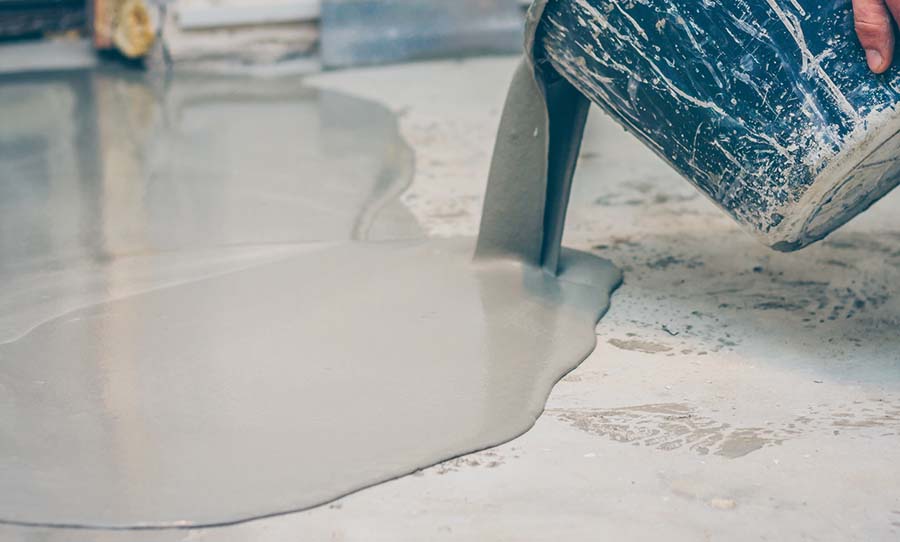
Mix your concrete according to the manufacturer’s instructions and pour it into the mold you installed. That may also be the time to include a bonding adhesive, depending on what kind of concrete product you will be using.
Ensure you pour the mix into the entire patio area you are reworking after wetting the old surface. You can use a trowel or paver to spread the concrete layer after pouring it until the surface is smooth. And press it down as much as possible, so it is compact.
If you are using a concrete overlay, you may use a squeegee to spread it out. But in that case, you may need to hurry because the product tends to dry out quickly.
If you want to create patterns of any kind, you should do so when the concrete is still wet.
Once the concrete has been poured, compressed, and patterns have been made, you should apply the concrete curing compound. The compound may take up to a week to cure.
During that time, you should cover the concrete surface if it rains to prevent spalling in the future.
Spalling refers to the process of flaking where pieces of concrete come off the enormous patio slab. When that happens, it compromises the integrity of the concrete patio.
7. Seal the Concrete
Concrete tends to be porous. For that reason, you should apply a sealer on your new concrete patio to keep water from penetrating it and causing damage over a prolonged period.
You can choose from the following types of sealers:
- Penetrating sealers: they penetrate below the concrete surface and chemically seal the slab’s pores.
- Epoxy sealers: they create a thick water-proof barrier on the concrete surface.
- Acrylic sealers: they are an affordable alternative that forms a resin-based water-proof barrier over the concrete surface.
Typically, it pays to reseal the patio every few years to keep the concrete surface in good shape. It will help your concrete patio surfaces last longer. And for the best results, you must clean the surface of the newly poured concrete thoroughly once it fully cures.
Factors To Consider When Pouring New Concrete Over Old Concrete
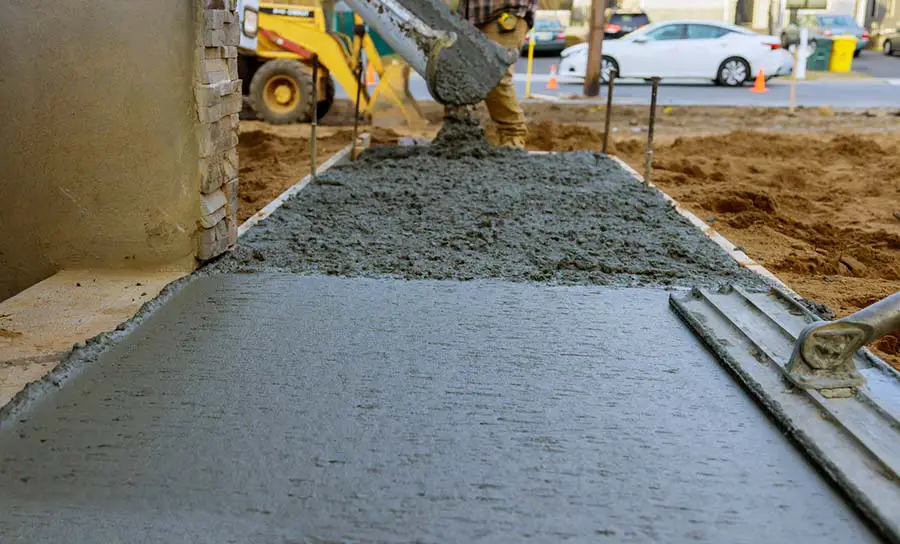
1. Presence of Doors or Staircases
Depending on where you are considering pouring a new layer of concrete, you will need to check if a door or a staircase might be affected by the addition of several inches of cement.
If so, you may have no choice but remove the existing concrete floor before pouring new concrete.
That is because the elevation of the new concrete may make it impossible for the door to open. As mentioned, the alternative is to remove the old concrete to maintain the clearance for the door to open.
2. Protruding Tree Roots
A quick examination of the old concrete surface is mandatory before you decide to lay new concrete on top of it.
The inspection is meant to check for the presence of roots. Roots from a nearby yard tree are often the culprits of cracking concrete slabs and moving or lifting the slab.
You must remove the roots affecting the old concrete before you lay new concrete. If you don’t, you can expect the same problem to carry over to the new layer of concrete.
In the case of menacing roots cracking your old concrete patio, you may have to go the long route of removing the old concrete entirely and removing the roots as well before applying a new layer of concrete.
So, pouring concrete over concrete will not be an option in this case until you deal with the roots problem first.
3. Massive Cracks or Unleveled Old Concrete
If the existing cracks on the old concrete surface of your patio are too big or the slab is severely uneven, it may be best to do away with the old surface and start afresh completely.
While it may sound and appear tedious, it would be the best option in such a case for the sake of better integrity and longevity for the new concrete surface.
Pouring a new layer of concrete to a surface that already has such structural issues guarantees that they will carry over to the new surface. Doing so is counterproductive and will not solve the problem as the cracks will still appear in a short while.
4. Frost Heaves
As long as the old concrete is not uneven and the cracks are not too big for repair without compromising the integrity of the slab, pouring a layer of concrete onto the existing concrete can work quite well.
However, an essential factor that you need to be aware of is frost heaves and their effect.
A frost heave is the swelling upward of soil during winter and the freezing temperatures. The freezing temperatures tend to penetrate the soil and cause this swelling that can impact infrastructure like roads.
An outdoor surface, like the driveway, patio, or sidewalk featuring new concrete over old concrete, is particularly prone to frost heaves. The fluctuating temperature can lift the concrete, which leads to cracks and separation in the concrete.
Part of the solution to prevent frost heaves is using a deep penetrating sealer that prevents water damage. So be sure to plugs any resulting cracks promptly should they occur.
5. Bonding the Layers
When new concrete is poured over old concrete, the lifespans of the new can be severely compromised if not done correctly.
That’s where the process of bonding comes in handy. Bonding is simply creating a layer of separation between the new concrete and the old. Materials used to achieve this can range from plastic, stone to sand.
For the sake of remaining eco-friendly and contributing to the health of the planet earth, contractors may not recommend plastic.
The separation between the old and new concrete prevents cracks in the old concrete from making their way onto the new concrete. It also creates flexibility and ensures a long lifespan for the new concrete layer.
6. Raising the Level
When pouring a new layer of concrete onto an old concrete surface, the surface level will inevitably rise by at least two to two and a half inches.
As such, you must consider the presence of doors or staircases that may prevent you from using this option.
Surfaces like patios, driveways, and walkways would also increase in depth, creating unwanted lips where the walkways join the driveway or the patio joins a walkway.
A lip can be a hazard because it can barely be seen, becoming very easy to trip over. However, you can overcome this issue by building a ramp as a safety measure where a lip occurs.
While pouring new concrete over an old one comes with its challenges, it is possible to do it with incredible results.
Do You Need Rebar for a Concrete Patio?
All concrete is susceptible to cracks with no exception. As such, you should use rebar to drastically reduce the chances of cracking when pouring concrete to an old patio concrete surface.
Rebar also helps in keeping the concrete even.
Rebars comprise steel wires and work to strengthen and aid the concrete under tension.
Without rebar, the chances of experiencing wide cracks and unevenness on the new concrete surface are quite high. That means that the lifespan of the concrete becomes short, leading to repairs and replacements on the horizon.
Final Thoughts
Pouring concrete over an old concrete patio can work in some instances and fail to work in others. It all depends on the condition of the existing concrete surface and whether it is redeemable. Some situations call for the complete replacement of the old concrete patio.
However, if you can repair the patio with underlying issues, you need to address them first. If you don’t do that, there is no use pouring the new concrete to fix the old and worn-out concrete surfaces. The source of the issues the patio faces will remain and affect the new concrete surface the same way over time. And you would have wasted your hard-earned money installing it without fixing the problem at the source.



